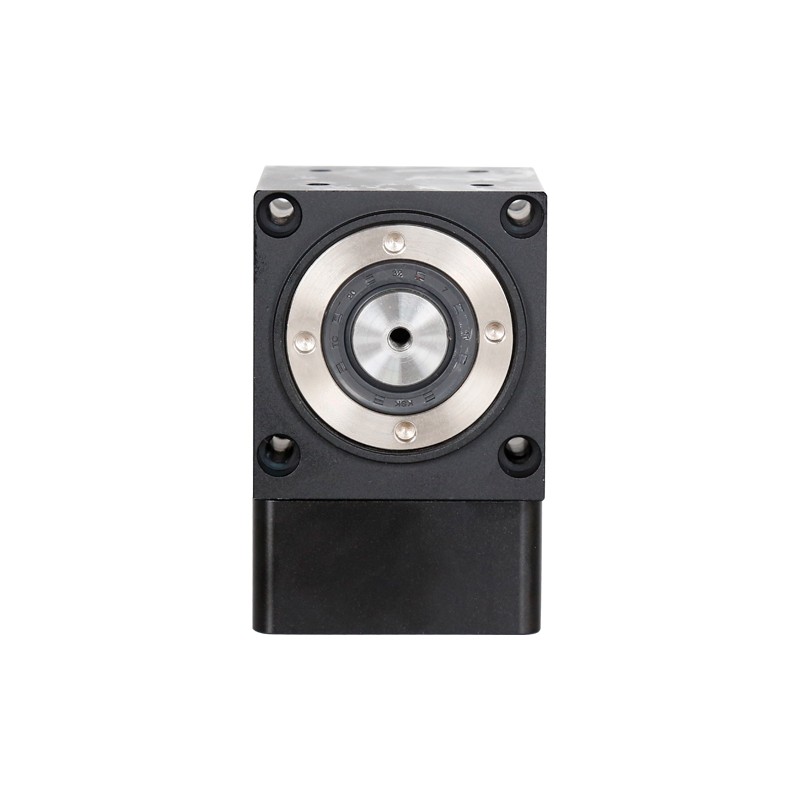Source:Industry News Release time:2022-09-06 Clicks: Popular:Reduction motor manufacturer

The gearbox system in the reduction motor is a complex system, including gears, transmission shafts, bearings and box structures. Among them, the box structure plays a supporting and sealing role for the entire system, and the probability of failure is very low. Therefore, in gearboxes, failures mainly occur on gears, drive shafts and bearings. According to statistics, gear, shaft and rolling bearing failures account for more than 90% of gearbox failures. In the fault diagnosis of the gearbox, it is generally only necessary to give whether there is a fault and the location of the fault.
According to the characteristics of vibration signals, common typical reduction motor gearbox fault forms are:
1. Tooth profile error
Tooth profile error refers to the deviation of the gear tooth profile from the ideal tooth profile, including manufacturing errors, installation errors and errors after use. This mainly refers to the tooth profile errors produced after the gear is put into use, including tooth surface plastic deformation, uneven surface wear and surface fatigue. Broken teeth can also cause tooth profile errors, but since the characteristics of their vibration signals are significantly different from the above-mentioned tooth profile errors, they are listed as separate fault forms to facilitate fault diagnosis.
2. Gears wear evenly
Uniform wear of gears mainly refers to the phenomenon of material friction damage during the meshing process after the gears are put into use, mainly including uniform wear of abrasive particles and uniform wear of corrosion. When the gear teeth are worn evenly, serious tooth profile errors do not occur, and the characteristics of the vibration signals are also very different, so they cannot be attributed to tooth profile errors.
3. Shaft misalignment
Shaft misalignment mainly refers to the fact that due to problems in the design, manufacturing, installation or use process, the shafts at both ends of the coupling are parallel but misaligned, resulting in distributed tooth profile errors in the gears on the shaft.
4. Broken teeth
Broken teeth are serious faults of gears. They mainly come in two forms: fatigue broken teeth and overloaded teeth. Most of them are fatigue broken teeth. When a tooth is broken, the vibration signal has a large impact energy, which is different from the tooth profile error and the uniform wear of the gear.
5. Box resonance
Box resonance is a resonance phenomenon caused by the natural frequency of the gearbox being excited by impact energy. The resonance of the box generates a large amount of impact vibration energy, which is a very serious failure and is generally caused by external excitation of the box.
6. The rotating shaft is slightly bent
The gearbox center shaft also often fails. When a shaft is slightly bent, it can also cause tooth profile errors in the gears on that shaft. Unlike single gear tooth profile error faults, when the shaft is bent, all gears on the shaft will produce large tooth profile errors.
7. The shaft is severely bent
A severely bent shaft is one of the more serious forms of failure in a transmission. When the shaft is severely bent, a large impact energy will be generated, causing serious consequences, and its vibration signal is also different from mild bending.
8. Shaft imbalance
Shaft imbalance is a typical failure of the transmission center shaft. The so-called unbalance refers to the unbalanced vibration of the shaft due to the existence of eccentricity. This misalignment may be caused by deformation after manufacturing, installation and use. When the shaft is unbalanced, gear transmission will also produce tooth profile errors, but this failure is obviously different from simple tooth profile errors.
Recommended reading
Related Information
Stepper motor
2020-12-21Planetary reducer
2021-04-15Right angle motor
2020-12-21CGX042
2021-01-13Stepper motor
2021-04-14Planetary reducer
2021-04-15CGXZ060
2021-01-13CGX085
2021-01-13CGXZK085
2021-01-13Stepper motor
2021-04-14CGXZ085
2021-01-13Stepper motor
2020-12-21Accessories
2020-12-21Planetary reducer
2021-04-15Planetary reducer
2021-04-15A brief discussion on what issues should be paid attention to when purchasing a planetary reduction
2022-09-02Let’s learn about the factors that affect the cleaning of planetary gear reduction motors
2022-09-09What are the main uses of reduction motors?
2022-07-25Introduction to the advantages and disadvantages of three different control methods of stepper motor
2022-05-26Servo reduction motor installation steps
2022-09-16Four factors affecting the price of linear reduction motors
2022-10-18Difference Between Reducer and Gearbox
2022-12-12The impact of acceleration and deceleration settings on the normal operation of stepper motors
2022-06-24Daily maintenance of disc planetary reducer
2022-10-08Applications of brushless DC motors
2022-05-31Installation steps of linear reduction motor
2022-11-01Principles for selecting reduction motors
2022-08-08How to choose linear reduction motor?
2022-10-18Reducer usage conditions
2022-12-19Causes of leakage of linear reduction motors
2022-10-25